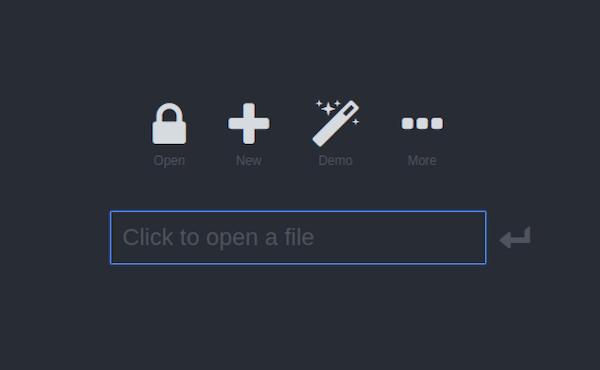

Lastly, if you’re even considering accessing this application remotely you’ll want to do this using HTTPS via a reverse proxy such as Caddy or Nginx. This needed to be ‘Overwrite kdbx file with PUT’ otherwise you’ll end up with a load of temporary files that make versioning interesting to say the least. One thing I had to change to get everything working perfectly was Settings > General > Storage > Save Method. Your URL will be server_address/webdav/database_name.xdbx, and your username and password will be the values specified above. You can select your webdav share under the More… menu item, and WebDAV as a sub option. When accessing your server on port 80 (First 80 in definitions is your local access port), you should now see the login screen. One point worth noting is that keeweb cannot create a database, so you’ll need to create a blank database using KeepassX or something similar. Or alternatively, in docker-compose notation: keeweb:

Assuming you have a working docker installation, simply run: docker run -d -p 80:80 -e WEBDAV_USERNAME=username -e WEBDAV_PASSWORD=password -v $HOME/keeweb:/var/www/html/webdav viossat/keeweb-webdav Helpfully, there are docker images available already which cover most of the leg work associated with grabbing the application and setting up a working webdav share.
#Keeweb password manager Offline#
As an added bonus, it can also be run as a cross-platform application which offers a nice offline alternative as well. This would be where Keeweb comes in, as a single file, web based password manager that uses the standard KeePass format it seems like a nice fit for our requirements. Password Managers bridge part of this gap, but then you’re either relying on a third party to host these for you, or you’re using a locally installed application which both come with their own collections of baggage and issues. This issue is only made worse by brute forcing passwords being made easier every day as more and more datasets from large websites are leaked, showing patterns, schemes and weaknesses in unlikely places. Passwords in my experience are a fickle thing, on one hand you absolutely need long and complex passwords, different for every site you use, but remembering these unique and complex passwords is nigh impossible.
#Keeweb password manager software#
Simply click more and then select the service you want to use to connect your online storage to Keeweb.Tags: Guides, Linux, Selfhosted, Software Keeweb does not have its own online database to sync your passwords. It can store all of your passwords offline and sync them with your own cloud storage services such as OneDrive, Google Drive, Dropbox, and so on. Keeweb is a password manager that works across multiple platforms. Keeweb can store passwords offline or online Keeweb is yet another password manager for Linux that we will look at in this article. Keepass and Encryptr, a Zero-knowledge system-based password manager, have already been discussed on LinuxAndUbuntu. There are a plenty of Linux password managers to choose from. In this article, I’ll discuss Keeweb, a Linux password manager that can securely store all of your passwords both online and offline. Passwords are easily forgotten in this situation. Every online service we sign up for allows us to create a password, which means we have to remember hundreds of passwords. Today, we rely on an increasing number of online services.


 0 kommentar(er)
0 kommentar(er)
